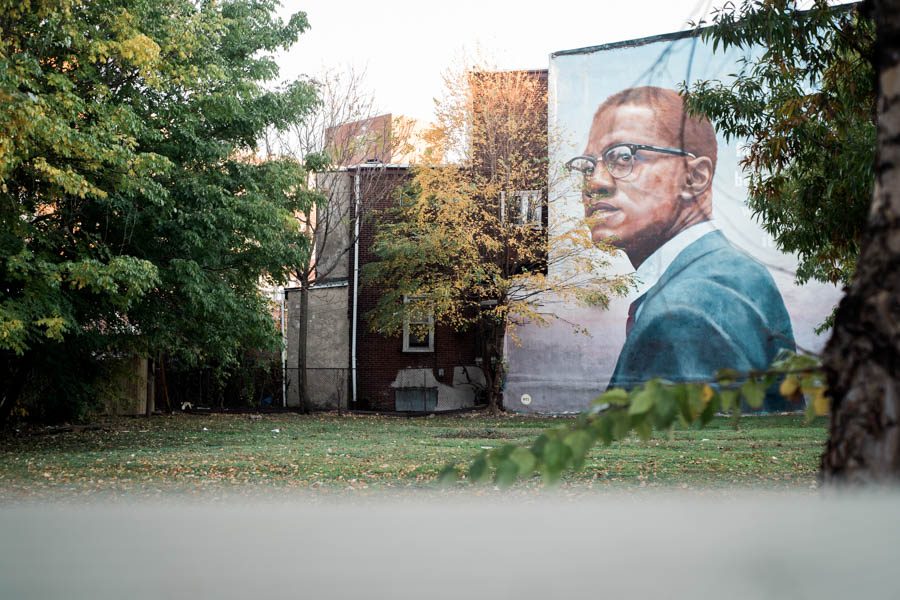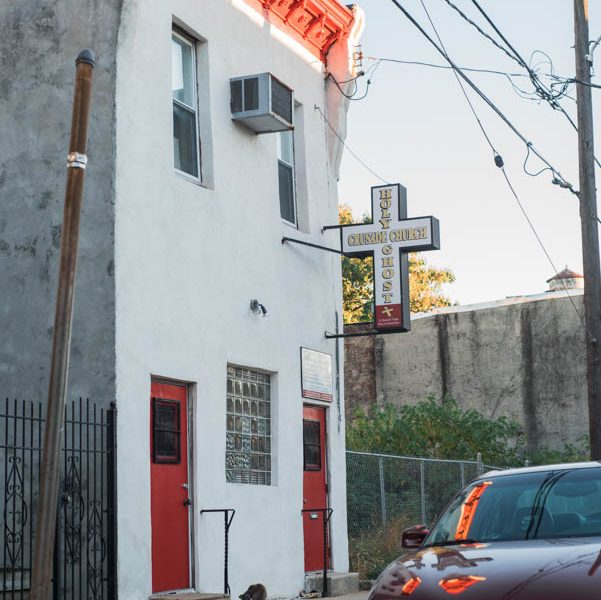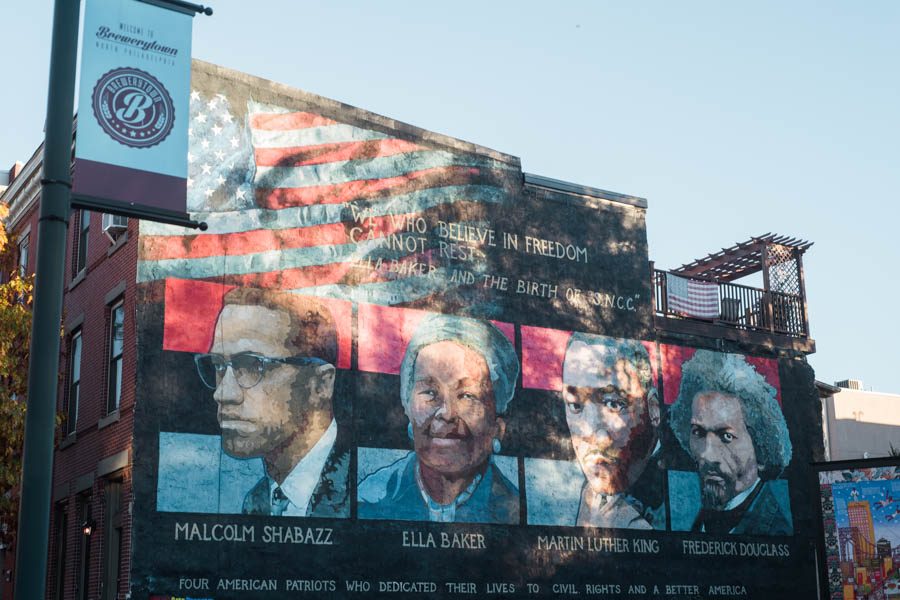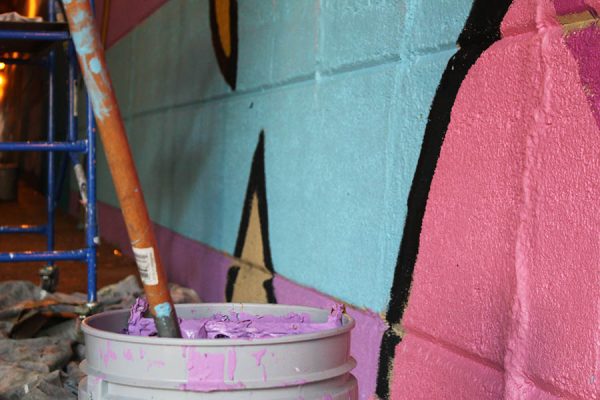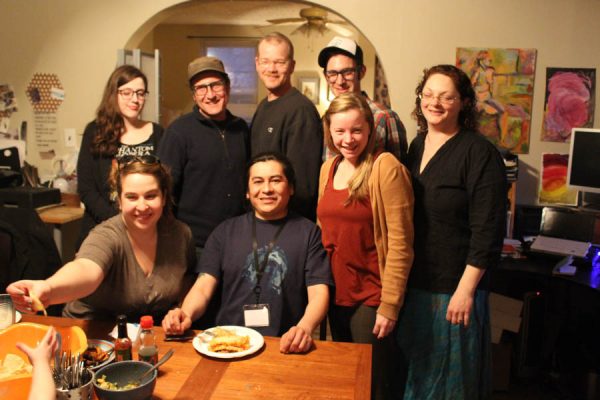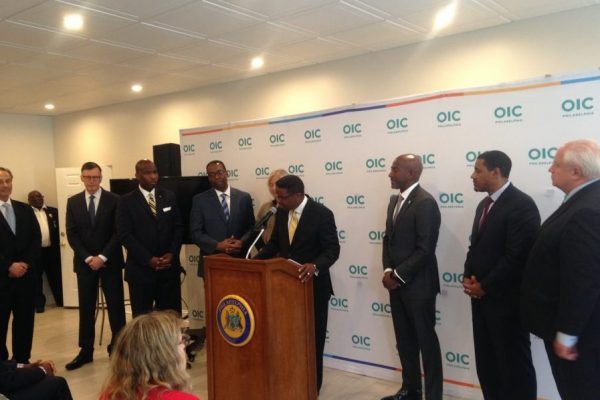Malcolm X’s Philly Roots Run Deeper Than You May Think
Malcolm X is not always thought of as closely related to the City of Brotherly Love. He started his family in Queens, died in Manhattan and is buried in Hartsdale. Still, murals of Malcolm X adorn the walls of Philadelphia buildings. How much time did Malcolm X actually spend in Philadelphia and why is it significant enough to account for the building-sized artwork created in his honor?
Malcolm Little was born in Omaha, Nebraska on May 19th, 1925. He was the son of Earl Little and Louise Helen Norton. He was one of seven children, although a Michigan newspaper article about his father’s death states that he had left behind “a widow… [and] 10 children.” His father was one of ten children to parents John Little and Ella Gray. Malcolm’s great-grandfather was named Tony, and he was a slave that belonged to the “Little family” at the time of the Emancipation. Upon becoming a free man, he was given the last name “Little.”
His family moved around a lot, even before he was born. According to the 1900 and 1910 Censuses, his father Earl was a farm laborer in Georgia before becoming a porter at a department store in Philadelphia by the 1920 Census. Just about five years before the birth of Malcolm, the Littles lived at 1451 N. Camac Street. The 1930 Census states that Malcolm was born in 1925 in Nebraska, and the family now lived in the 50th district of Lansing, Michigan. Earl Little was now a “laborer” doing “odd jobs.”
Earl Little died in Michigan at the age of 41. He was run over by a streetcar when he was going to fetch his overcoat that he had forgotten. Rumors about his death range from him committing suicide to him being murdered by a racist group called the “Black Legion.” In 1940, Malcolm lived at the residence of Charles McKinney in Mason, Michigan. McKinney was a “ditch digger” in the “drain construction” industry. In addition to the six members of the McKinney family that Malcolm lived with, he also lived with eight other warders in the house. This was just one of the foster homes that Malcolm lived in after his father died when he was six, and his mother was admitted to Kalamazoo’s mental hospital when he was 13.
Malcolm Little had misbehaved as a child. He had eventually found himself in jail for larceny and breaking and entering. While in jail, he became a Muslim and refused his last name. Since “Little” was the name that was given to his family because of the slave-owning family that his great-grandfather belonged to, Malcolm decided that “X” symbolized his real identity. According to Malcolm X on page 129 of his autobiography sourced from “al-rasid.com”, the “Muslim’s ‘X’ symbolized the true African family name that he never could know.” The name “Little” belonged to “some blue-eyed devil…[who] had imposed upon [his] paternal forebears.”
According to Hidden City Philadelphia, Malcolm X “moved to Philadelphia in early March of 1954…to energize Temple 12, located at 1643 North Bailey St.” Hidden City gets their information from the biography “Malcolm X: A Life of Reinvention”. Malcolm may have lived at 1522 N. 26th St. with Joseph X Gravitt, but that building has since been demolished. Author Sean Patrick Griffin, Ph.D. in Administration of Justice from the Pennsylvania State University, claims that he lived at 2515 W. Nicholas St. in his 2005 book “Black Brothers, Inc.: The Violent Rise and Fall of Philadelphia’s Black Mafia”.
Hidden City also states that Malcolm X “remained minister of Temple 12 for…three months.” Temple 12 (1643 N. Bailey St.) was recreated as the Holy Ghost Crusade Church by Annie L. Duncan, who was “honored by former mayor Wilson Goode for her church work,” according top Philly.com.
According to Anderson@Large, a different house was ”nominated for listing on [the] Philadelphia register of historic places” because Malcolm X lived there. Phila.gov has the nomination set forth by Faye Anderson and Oscar Beisert on March 10th, 2016. The property at 2503 W. Oxford St. was used for “providing housing for single male members of the Nation of Islam in the early 1950s” and it was also the location where Malcolm X resided in during his stay in Philadelphia. This property was also referred to as the “Unity House” and the “Fruit House.” Brother Abdul Rahim Muhammad, executive director of the New Africa Center, said, “the Fruit House was a ‘clubhouse’ for…single men…until they got married.”
It is quite strange that there are so many different properties that may or may not have been the home of Malcolm X while he was in Philadelphia, but we know for certain that he did live here. Philadelphia Tribune states that “shortly after just a year out of prison, Malcolm was named minister of the [Nation of Islam’s] Boston mosque and then a year later minister of the Philadelphia mosque.” The New York Public Library also confirms Malcolm’s residence in Philadelphia in March 1954.
Regardless of which house was actually the house, Malcolm X impacted Philadelphia and its residents during his stay in the city, as well as after he had left.
Barbara Chase-Riboud, a graduate from the Tyler School of Art at Temple University, was inspired by Malcolm X to create “The Malcolm X Steles.” Vist Philly included in an article information about Chase-Riboud’s 40+ works that were “on display at major art museums in Asia, Europe and across the United States” before finally making an appearance at the Philadelphia Museum of Art. “Five monumental sculptures [were] created to commemorate the life of Malcolm X.” The exhibit also featured “about 20 charcoal sketches…directly related to the process of creating the Malcolm X Steles.”
There are many additional forms of artwork that were inspired by Malcolm X, such as documentaries, books, and paintings. Philly Voice places the park between 51st and 52nd Streets, Pine Street, and Lakewood Avenue was renamed “Malcolm X Park” in 1995, and it holds group meetings the first Wednesday of every month. The Friends of Malcom X Park describes the activities at these volunteer group meetings: “organizing great events in the park, participating in clean-ups, advocating for new resources, and of course, socializing with our neighbors.”
In addition to the previously mentioned Malcolm X-inspired works, a large mural of Malcolm X was completed in 2005 by Ernel Martinez at the corner of Ridge and W. Susquehanna Avenue. CBS Philly includes the mural on its list of the “Top Murals in Philadelphia.” Along with the image of Malcolm X is a quote of his: “Education is our passport to the future. For tomorrow belongs to the people who prepare for it today.” Ernel Martinez is also responsible for the Paul Robeson mural at the corner of 45th and Chestnut Streets. More information about Ernel Martinez can be found at opensource.muralarts.org, which describes the “series of beloved murals and public art installations” he is responsible for.
Another mural of Malcolm X is painted beside Ella Baker, Martin Luther King Jr., and Frederick Douglas at 3032 W. Girard Ave. Matador Network explains that the artist was Parris Stancell and sponsored by the Freedom School Mural Arts Program.
Although we are not exactly sure which address Malcolm X lived at, or for how long he resided at each of them, we know the story of the man who changed his name to el-Hajj Malik el-Shabazz. The legacy of Malcolm X is strong and well-remembered throughout this country. Most people know about his death on February 21, 1965 when he was assassinated by members of the Nation of Islam. The three men responsible for the 21 gunshot wounds were served life sentences in prison.
Although some people saw Malcolm X as a divisive figure, others saw him as a charismatic leader. His impact on the country, and specifically the city of Philadelphia, is remembered through various artistic outlets that we can observe and appreciate, regardless of what your perception of his legacy may be. Malcolm X’s time spent in Philadelphia is just another way that we can connect ourselves to a much bigger idea in the history of the United States. •
